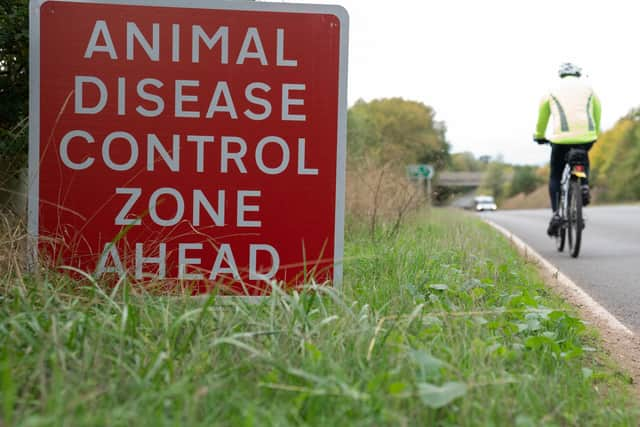Migrating birds monitored by newly created surveillance network amid avian flu outbreak
Scotland’s nature agency NatureScot said the current H5N1 strain had a devastating impact on seabird populations throughout the summer.
Now that the seabird breeding season is over and colonies have dispersed, concerns remain about how the outbreak could evolve over the coming months and affect migrating goose populations, other waterfowl and waders.
Advertisement
Hide AdAdvertisement
Hide AdMigratory birds, especially waterbirds, carry different strains of the virus along their migration routes and wintering goose populations are being closely monitored.


The surveillance network will see information gathered by a team of site managers and volunteers across the country feed into the work of Scotland’s avian flu task force, led by NatureScot.
This will help it provide swift advice to government, conservationists and land managers on practical actions to help reduce the transmission and impact of the virus.
Alastair MacGugan, NatureScot’s wildlife management manager, said: “As we head into the winter months, we are still very concerned about the potential impact of avian flu on our wild bird populations and we remain vigilant to ensure we can respond to the evolving situation.
“We’re monitoring wintering goose populations very closely for avian flu and are working with colleagues in Iceland and Norway to identify cases in migrating populations.
“Here in Scotland, we’ve set up a network of site managers and volunteers to provide real-time reporting on what is happening out in the field, helping us take swift and targeted decisions.”
Earlier this month an avian flu “prevention zone” was declared across Great Britain as the country continues to battle the disease.
Advertisement
Hide AdAdvertisement
Hide AdOfficials announced it will now be a legal requirement for all bird keepers to follow strict measures to protect flocks from bird flu, including keeping free range birds in fenced areas and stringent biosecurity for staff on farms.
The move by the chief veterinary officers of England, Wales and Scotland came following an increase in the number of cases of avian flu being detected in wild birds and commercial premises in recent weeks.
NatureScot said that a precautionary approach is being taken to any activity that may individually or cumulatively impact on geese and wintering waterbirds – including public access, cockling, ringing, licensed shooting and wildfowling.
Decisions on whether to issue licences to shoot geese causing serious agricultural damage will be taken on area-by-area basis and using the best current available information.
Where wildfowling on the foreshore is carried out under permit, these have been issued, however this will be reviewed if an avian flu outbreak is confirmed in the relevant area.
The risk to human health from the virus is said to be low, but members of the public are advised to continue to avoid touching sick or dead wild birds and keep dogs on the lead in areas where there are infected birds.